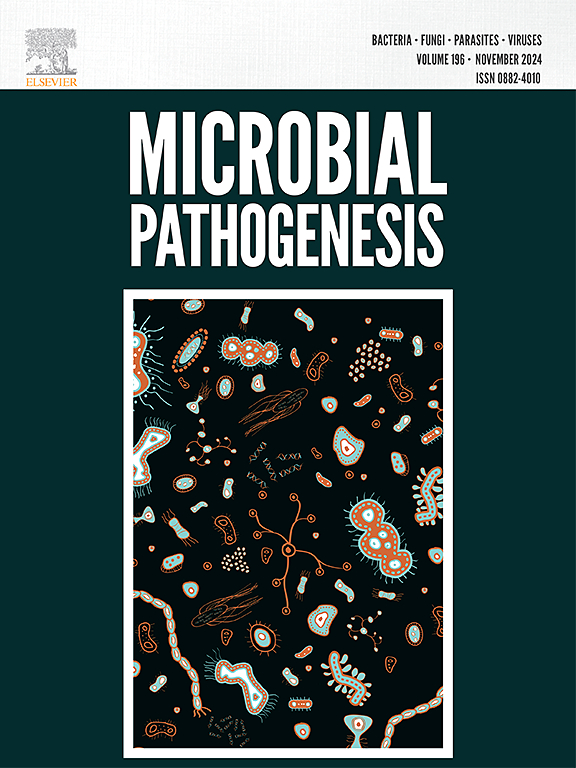新型重组 LSDV 在东亚和东南亚的流行情况:诱发金仓鼠皮肤和睾丸损伤。
IF 3.3
3区 医学
Q3 IMMUNOLOGY
引用次数: 0
摘要
2020 年 6 月,中国广东首次发现结节性皮肤病病毒(LSDV)。全基因组测序和进化分析表明,该毒株是一种新型重组疫苗毒株。我们的调查确定了 2024 年前受 LSD 爆发影响的地区,揭示了 LSDV 在东亚和东南亚的广泛流行。随后对菌株物理和化学特性的分析表明,LSDV 对高温、不同 pH 值、湿度、紫外线辐射和光照有很强的抵抗力。在测试过的消毒剂中,过硫酸钾、戊二醛和苯扎溴铵对 LSDV 的杀病毒效果最强,同时安全性也很高。利用叙利亚仓鼠模型,感染该毒株后会形成皮肤结节和睾丸损伤,这为了解 LSDV 的致病机理提供了宝贵的信息。总之,本文提供的综合实验数据是推进生物安全协议、促进有效的预防和控制策略以及促进 LSDV 小动物模型发展的基石。本文章由计算机程序翻译,如有差异,请以英文原文为准。
Prevalence of the novel recombinant LSDV in east and Southeast Asia: Inducing skin and testicular damage in golden hamsters
In June 2020, Lumpy Skin Disease Virus (LSDV) was first discovered in Guangdong, China. Whole-genome sequencing and evolutionary analysis indicate that this strain represents a novel recombinant vaccine strain. Our investigation has identified regions affected by LSD outbreaks prior to 2024, revealing widespread prevalence of LSDV across East Asia and Southeast Asia. Subsequent analysis of the physical and chemical characteristics of the strain revealed LSDV's resilience to high temperatures, varying pH levels, humidity, UV radiation, and light exposure. Among the tested disinfectants, potassium persulfate, glutaraldehyde, and benzalkonium bromide have demonstrated the most potent virucidal efficacy against LSDV while maintaining high safety profiles. Utilizing the Syrian hamster model, infection with this strain has resulted in the formation of skin nodules and testicular damage, providing valuable insights into the pathogenesis of LSDV. In conclusion, the comprehensive experimental data presented herein serve as a cornerstone for advancing biosafety protocols, facilitating effective prevention and control strategies, and fostering the development of small animal model for LSDV.
求助全文
通过发布文献求助,成功后即可免费获取论文全文。
去求助
来源期刊

Microbial pathogenesis
医学-免疫学
CiteScore
7.40
自引率
2.60%
发文量
472
审稿时长
56 days
期刊介绍:
Microbial Pathogenesis publishes original contributions and reviews about the molecular and cellular mechanisms of infectious diseases. It covers microbiology, host-pathogen interaction and immunology related to infectious agents, including bacteria, fungi, viruses and protozoa. It also accepts papers in the field of clinical microbiology, with the exception of case reports.
Research Areas Include:
-Pathogenesis
-Virulence factors
-Host susceptibility or resistance
-Immune mechanisms
-Identification, cloning and sequencing of relevant genes
-Genetic studies
-Viruses, prokaryotic organisms and protozoa
-Microbiota
-Systems biology related to infectious diseases
-Targets for vaccine design (pre-clinical studies)
 求助内容:
求助内容: 应助结果提醒方式:
应助结果提醒方式:


